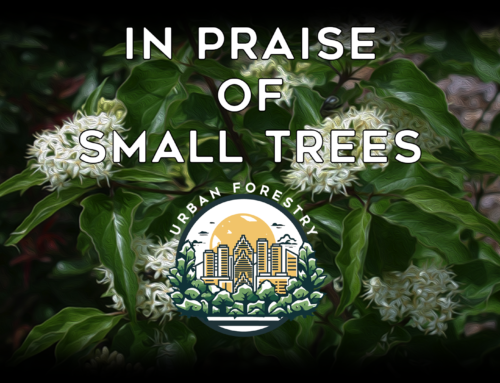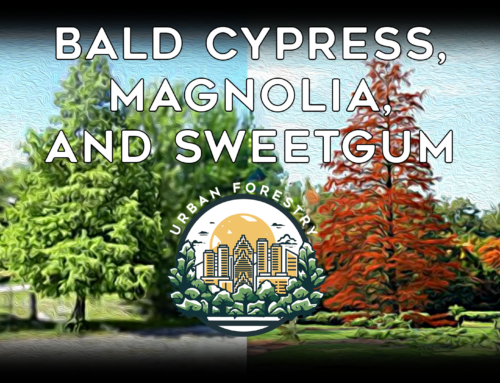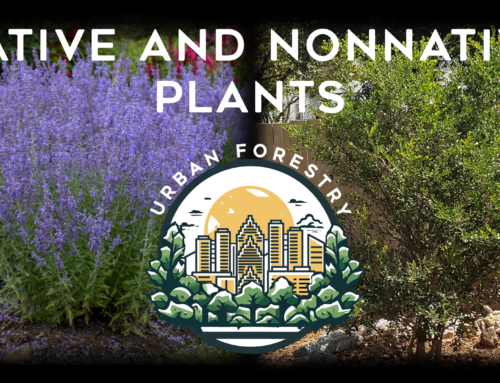When a people begin to cut down their trees without making any provision for reforestation, you may be sure it is a sign of the beginning of their cultural degeneration.
-Robert Anton Wilson
Many early accounts of travelers to the future site of Houston remarked about the tall pine and oak forests covering much of the area. Even the earliest ads for our Houston Heights development spoke of the pines touching the feet of the angels. So which pine trees were these? Mostly Loblolly Pine, perhaps some shortleaf, and maybe a few Longleaf all of which are yellow pines. Now which is which and what about those adapted to this area, but not present naturally? That is the subject of this Urban Forestry essay. Much less complicated than oak species, but nevertheless confusing.
Let us begin with the tall and stately Loblolly. Many wonder what loblolly means. The word comes from old British slang used by sailors to describe the lumpy gruel they were served for meals at sea. Why is it used for our pine? That’s due to its natural growing habit of the muddy marshy areas in floodplains and along streams, bayous, and rivers. The Longleaf and Shortleaf Pines prefer dryer, sandier, and generally upland areas. The Loblolly has beautiful bark of brown to dark gray color with yellow green flowers, 5 to 10-inch needles in bundles of three and 3 -5-inch cones. Why is that important? Bark, flowers, needles, and cones are the way we distinguish all the southern yellow pines. The Loblolly is always a great choice in Houston and it even comes in a marvelous natural dwarf variety. The dwarf is just like the standard but grows slowly to only 15 to 20 feet tall with a narrow crown. Wonderful for small yards.
Other East Texas native pines are the short and long leaf varieties. The Shortleaf has darker green colored needles of 2-5 inches long, small cones 2 inches in size, lighter red brown bark than the Loblolly. The Longleaf, my personal favorite tree, has needles 10 to 18 inches long in bundles of 3, purple flowers, large cones 6-12 inches in size with a pretty red brown bark.
Two pines that are native as far west as Louisiana, but not in Texas are the Slash Pine and the Spruce Pine. The Slash has many similar characteristics to the Longleaf and is easily confused with it when fully grown. Its needles are almost as long, but in bundles of 2 not 3 usually, its bark is very similar, cones almost as big, but the key difference is the Longleaf grows in a grass like stage for several years sinking a deep tap root, while the slash grows upward immediately. Many pines in Houston planted between World War II and 1990 are Slash Pine as it was common in nurseries during that time. The Spruce Pine differs from the other pines by being able to grow in some shade and its bark is not as dark or scaly as Shortleaf which it otherwise resembles. Unfortunately, it is only rarely found in the nursery trade, but should be more available in the future.
An introduced species from further east is the Virginia Pine which is a great Christmas tree (That is why it came to Texas for Yule time tree farms). It is a small pine with similar needles to Spruce and Shortleaf.
I advise people to avoid pines that do well in West Texas such as Pinyon and Afghan Pine. They are drought tolerant, but do not last long in our environment unless drainage is perfect. The Japanese Black Pine is attractive but develops fungal issues and usually dies in 20 years. It loves California, but Southeast Texas is not a good place for it.
When planting pines remember to be sure you can look straight up and see sky. These trees are not just sun loving, they cannot thrive without it except for the Spruce Pine, but even it will be happier in sun. Be careful to protect the pine’s roots. They hate having them dug through for large pipes or cut for driveways etc. Many a fine old tree with centuries of life ahead has been killed by careless digging.
To summarize: These are the more commonly found pines in our area and some attributes.
- Loblolly 70 -150 feet tall (in Houston closer to 70) lives for centuries.
- Dwarf Loblolly 15-20 feet tall nice for small yards.
- Longleaf 70 – 125 feet tall, superb needles open crown lives for centuries.
- Slash shares a bit of both Loblolly and Longleaf not as long lived (closer to 125 years).
- Spruce 70 -100 feet tall can take some shade and even grow beneath taller trees, but hard to find in nurseries.
The pine species is our native overstory giving height, long lived evergreen beauty, aromatic air, and a home and food for countless birds and animals. For much of the history of the Heights the pines were relics of the original forest and were not replaced as most people field dug their trees from the forest to bring to their yards and due to pines having deep taproots are nearly impossible to transplant once they get knee high (a great reason to plant container grown pines or seedlings).



















